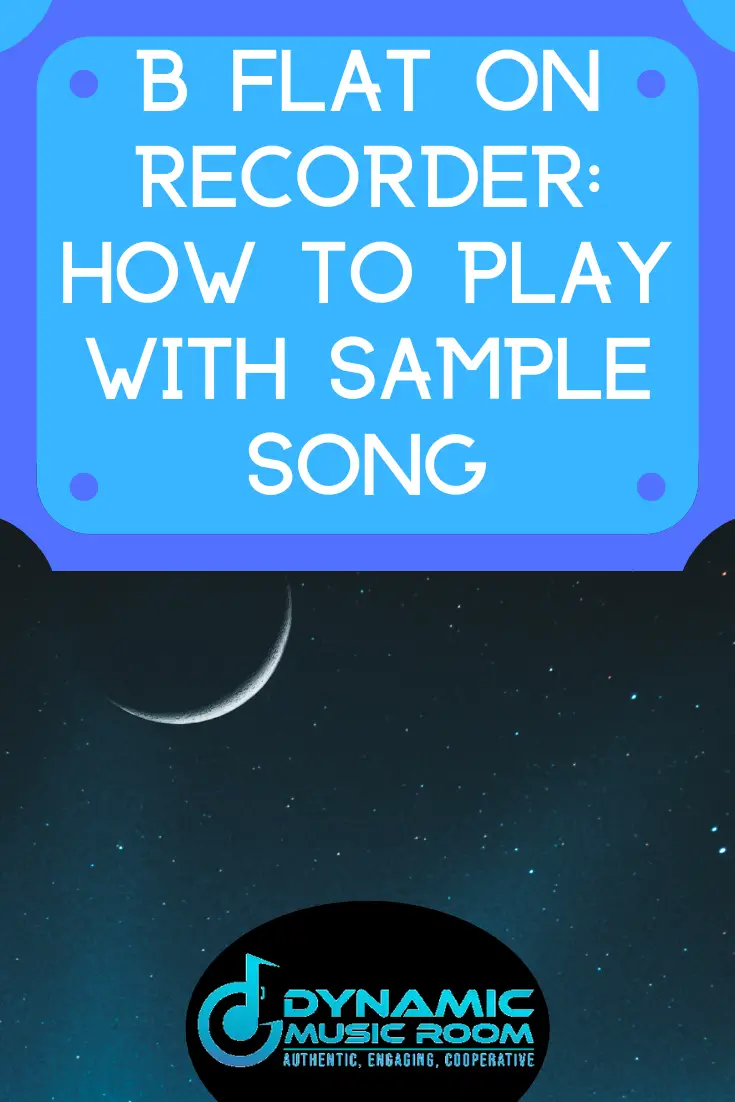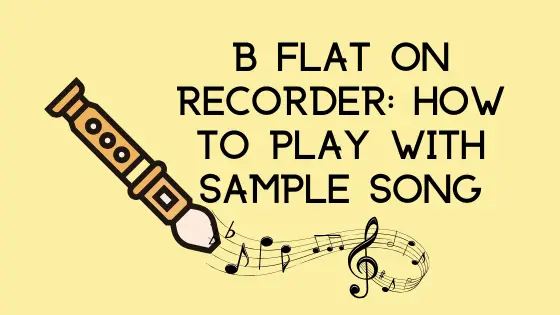Bb or b flat on recorder is one of the first accidentals students learn. The first is usually F#, but Bb is another common one for recorders.
In my over 10 years of teaching and 20 years of playing the recorder, I’ve seen students panic over how to play this note, but once they’ve calmed down long enough to learn it, it’s easy to master.
B flat on recorder is a half step below the note, B. It’s also a half step above the note A and called A# in this case. Bb is fingered as the thumb on the back, first, third, and fourth fingers on their respective holes.
Check out the rest of the article for more directions and sample songs to help reinforce Bb.
Table of Contents
B Flat On Recorder Fingering And Exercises
First, let’s talk about how to finger B flat, also called A# (though not as frequently).
In short, it’s played like this:
- Thumb on the back (left hand)
- 1 = pointer on the first hole (left hand)
- 3 = ring on the third hole (left hand)
- 4 = pointer on the fourth hole (right hand)
Now, in more detail.
To start, the musician places their left hand thumb on the back thumbhole.
With the left-hand pointer finger, cover up the first hole on top.
For B flat, skip the second hole altogether.
Using the left-hand ring finger, cover up the third hole.
Switching to using the right-hand, the pointer finger covers up the fourth hole.

Fingering Exercises For Bb On Recorder
There are two ways I prefer to approach teaching this note at first.
Using one or the other always seems to work, but I when I show students both ways to think about it, the fingering seems to stick around better.
Down from B – The not Bb is an altered version of B, so it only makes sense to start here.
Have students (or yourself) start by fingering B (check out the recorder basic fingering chart for more info and a useful chart for FREE).
Now, add the 3rd and 4th fingers. Essentially, you’re moving from B → Bb.
Now, slowly lift those fingers and go back to B.
Repeat and alternate the notes gradually getting faster and faster.
B → Bb →B → Bb →B → Bb →B → Bb
Walking Up And Down The Hill
Bb for recorder is typically used as the 4th scale degree in the key of F major or D minor.
In both keys, the note tends to resolve down to A.
So it makes sense for us to build fluency in going from Bb to A. It’s also fairly common for melodies in these keys to have the A go to Bb briefly.
This exercise hits both these keys in the way it’s most likely to be used.
Start on the note G (T, 1, 2, 3). Move from G → A → Bb.
Take your time and do this slowly with good tone and solid fingerings.
Repeat these three until they’re comfortable slowly.
Now, start on Bb and move down. Bb → A → G.
Repeat as before making sure the good tone and solid fingerings are present.
It’s time to put them together once each part is ready.
G → A → Bb → A → G.
As before, repeat until it’s solid. Then, practice going gradually faster and faster. It’ll be tough, but this exercise is quite practical for the reasons we said at the start.
Sample Song To Help Teach B Flat On Recorder
Twinkle Twinkle Little Star is a kid’s song, but it perfectly (and slowly) demonstrates how B flat is usually used on recorders. This being, coming from and going to A.
It’s still a tricky note to learn, so this song works perfect in a couple of other ways.
First, the song is slow and rhythmically simple.
Second, the song is well-known by all.
Finally, it only uses notes already known at this point (and reinforces F on recorder).
Here’s the song.
You may also enjoy learning these other songs on recorder:
Final Thoughts
I hope you enjoyed learning how to play Bb or B flat on recorder.
It’s a useful note for advanced playing on the soprano recorder. It may seem difficult at first, but with time and practice, it’s easily learned.
Check out our guide on how to play the recorder.


